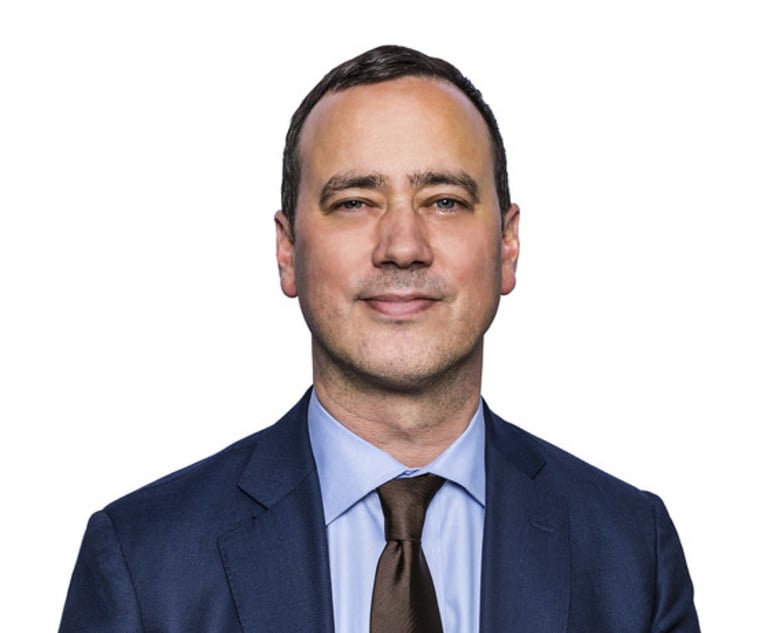CSX Attracts New CEO and Stock Price Rises Sharply
Executive Compensation columnist Joseph E. Bachelder III writes: In 2017, CSX Corporation, a leading railroad company, paid or committed to pay (subject to certain conditions) over $200 million (including grant-date value of a stock option) to attract as its new chief executive officer E. Hunter Harrison, who has an extraordinary record in leading three major companies in the railroad industry.
August 01, 2017 at 02:04 PM
9 minute read
In 2017, CSX Corporation, a leading railroad company, paid or committed to pay (subject to certain conditions) over $200 million (including grant-date value of a stock option discussed below) to attract E. Hunter Harrison as its new chief executive officer.
On Jan. 18, 2017, Canadian Pacific Railway Limited announced that Harrison was resigning as its CEO. The Wall Street Journal reported (after regular trading hours ended) that Harrison, who is age 72, was “joining with an activist investor in an attempt to shake up management at rival railroad CSX Corp. They are expected to try to put Harrison in a senior management position at CSX … .”1 The following day, January 19, the price of CSX shares on the Nasdaq Stock Market jumped approximately $8 billion to $42 billion—an increase of 23 percent from $34 billion. As of June 30, CSX's stock market value had increased over $16 billion to $50 billion, an increase of 47 percent, since the day before the public announcement.
Harrison, before becoming employed by CSX as its CEO on March 6, had compiled an extraordinary record in leading three major companies in the railroad industry: Illinois Central Railroad Co., Canadian National Railway Company and Canadian Pacific Railway Limited. In each case he applied what is described as “precision railroading” or “precision scheduled railroading.” “Precision railroading” includes, among other things, keeping trains running as close to schedule as possible and making major reductions in “down-time” of rail equipment. Table 1 (below), based on a presentation to shareholders of CSX by the activist investor involved, Mantle Ridge LP, shows the reduction in operating costs as a ratio of operating revenues over the periods of time that Harrison served as an executive of the three railroads noted.2
This content has been archived. It is available through our partners, LexisNexis® and Bloomberg Law.
To view this content, please continue to their sites.
Not a Lexis Subscriber?
Subscribe Now
Not a Bloomberg Law Subscriber?
Subscribe Now
NOT FOR REPRINT
© 2025 ALM Global, LLC, All Rights Reserved. Request academic re-use from www.copyright.com. All other uses, submit a request to [email protected]. For more information visit Asset & Logo Licensing.
You Might Like
View All
Chancery Claims Linking Fox Management to Defamation Liability Clear Hurdle
4 minute read
Turbocharge Growth: How Technology Will Shape a Successful 2025

Fatal Shooting of CEO Sets Off Scramble to Reassess Executive Security
5 minute read
The Corporate Transparency Act: One Year Later With Deadline Looming
4 minute readTrending Stories
Who Got The Work
Michael G. Bongiorno, Andrew Scott Dulberg and Elizabeth E. Driscoll from Wilmer Cutler Pickering Hale and Dorr have stepped in to represent Symbotic Inc., an A.I.-enabled technology platform that focuses on increasing supply chain efficiency, and other defendants in a pending shareholder derivative lawsuit. The case, filed Oct. 2 in Massachusetts District Court by the Brown Law Firm on behalf of Stephen Austen, accuses certain officers and directors of misleading investors in regard to Symbotic's potential for margin growth by failing to disclose that the company was not equipped to timely deploy its systems or manage expenses through project delays. The case, assigned to U.S. District Judge Nathaniel M. Gorton, is 1:24-cv-12522, Austen v. Cohen et al.
Who Got The Work
Edmund Polubinski and Marie Killmond of Davis Polk & Wardwell have entered appearances for data platform software development company MongoDB and other defendants in a pending shareholder derivative lawsuit. The action, filed Oct. 7 in New York Southern District Court by the Brown Law Firm, accuses the company's directors and/or officers of falsely expressing confidence in the company’s restructuring of its sales incentive plan and downplaying the severity of decreases in its upfront commitments. The case is 1:24-cv-07594, Roy v. Ittycheria et al.
Who Got The Work
Amy O. Bruchs and Kurt F. Ellison of Michael Best & Friedrich have entered appearances for Epic Systems Corp. in a pending employment discrimination lawsuit. The suit was filed Sept. 7 in Wisconsin Western District Court by Levine Eisberner LLC and Siri & Glimstad on behalf of a project manager who claims that he was wrongfully terminated after applying for a religious exemption to the defendant's COVID-19 vaccine mandate. The case, assigned to U.S. Magistrate Judge Anita Marie Boor, is 3:24-cv-00630, Secker, Nathan v. Epic Systems Corporation.
Who Got The Work
David X. Sullivan, Thomas J. Finn and Gregory A. Hall from McCarter & English have entered appearances for Sunrun Installation Services in a pending civil rights lawsuit. The complaint was filed Sept. 4 in Connecticut District Court by attorney Robert M. Berke on behalf of former employee George Edward Steins, who was arrested and charged with employing an unregistered home improvement salesperson. The complaint alleges that had Sunrun informed the Connecticut Department of Consumer Protection that the plaintiff's employment had ended in 2017 and that he no longer held Sunrun's home improvement contractor license, he would not have been hit with charges, which were dismissed in May 2024. The case, assigned to U.S. District Judge Jeffrey A. Meyer, is 3:24-cv-01423, Steins v. Sunrun, Inc. et al.
Who Got The Work
Greenberg Traurig shareholder Joshua L. Raskin has entered an appearance for boohoo.com UK Ltd. in a pending patent infringement lawsuit. The suit, filed Sept. 3 in Texas Eastern District Court by Rozier Hardt McDonough on behalf of Alto Dynamics, asserts five patents related to an online shopping platform. The case, assigned to U.S. District Judge Rodney Gilstrap, is 2:24-cv-00719, Alto Dynamics, LLC v. boohoo.com UK Limited.
Featured Firms
Law Offices of Gary Martin Hays & Associates, P.C.
(470) 294-1674
Law Offices of Mark E. Salomone
(857) 444-6468
Smith & Hassler
(713) 739-1250






